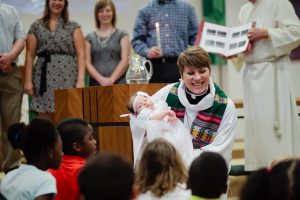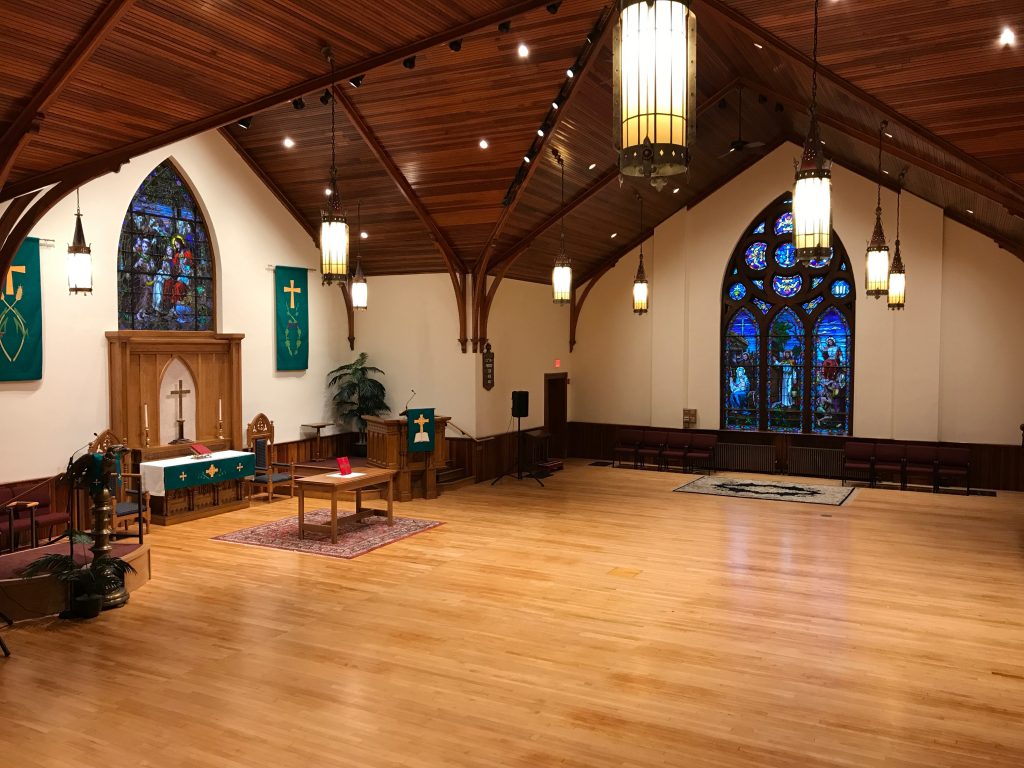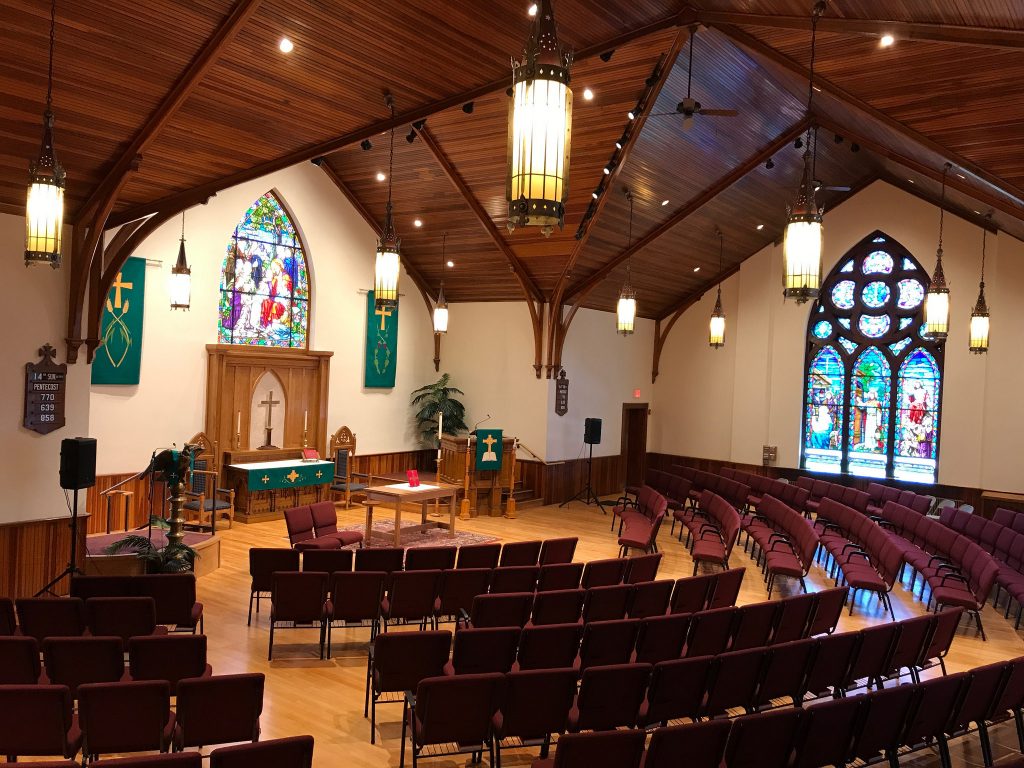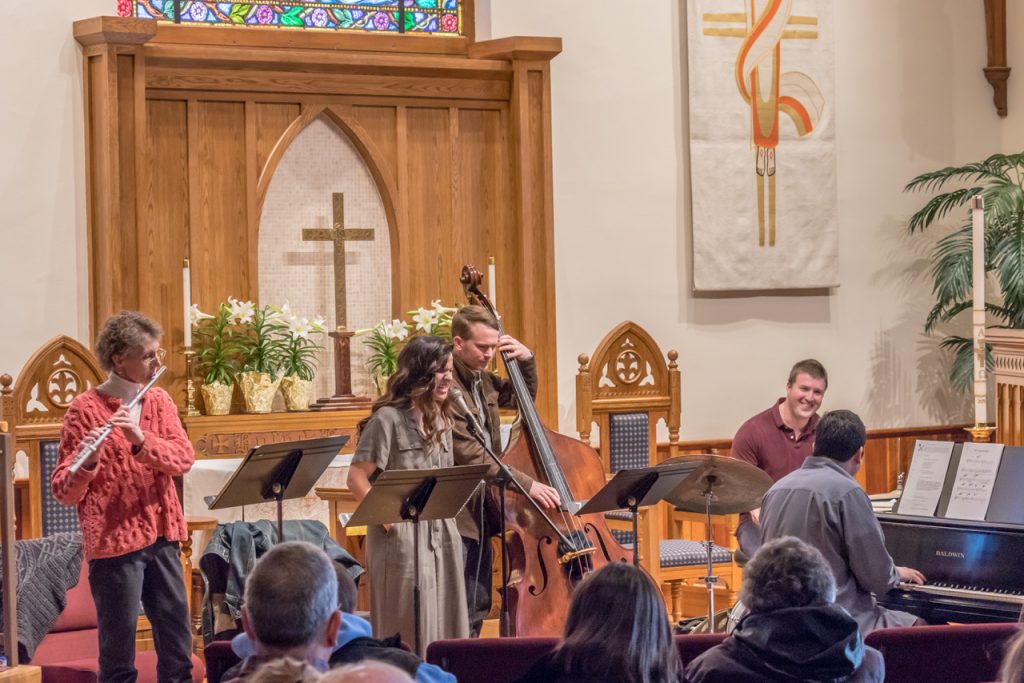Today’s post is by Linda Witte Henke, an artist specializing in liturgically purposed art for congregation, synod, and churchwide settings (www.lindahenke.com). This is Linda’s second quarterly post providing suggestions and templates for use of visuals to enhance worship.
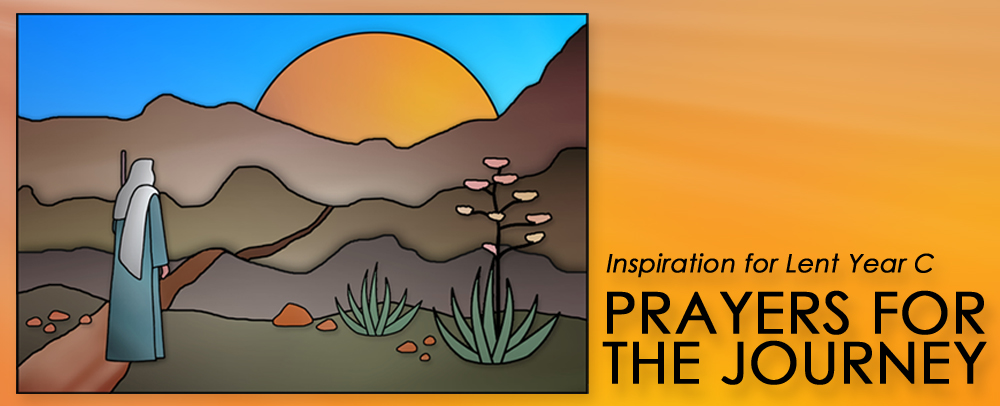
A mystery of the Revised Common Lectionary is how the texts speak in fresh ways with each repetition of the cycle. The Year C texts for Lent once again touched my heart and sparked my imagination. I was especially inspired by how the prayers of the day in Evangelical Lutheran Worship speak eloquently in pointing to the very heart of the gospel and engaging our reflection on the gospel’s significance for our life/faith journeys:
- Lent I – Sunday, March 10- Jesus’ temptation in the wilderness [Luke 4:1-13]
O Lord God, you led your people through the wilderness and brought them to the promised land. Guide us now, so that, following your Son, we may walk safely through the wilderness of this world toward the life you alone can give, through Jesus Christ, our Savior and Lord, who lives and reigns with you and the Holy Spirit, one God, now and forever. Amen.
- Lent II – Sunday, March 17 – Jesus longs to gather his brood [Luke 13:31-35]
God of the covenant, in the mystery of the cross you promise everlasting life to the world. Gather all peoples into your arms, and shelter us with your mercy, that we may rejoice in the life we share in your Son, Jesus Christ, our Savior and Lord, who lives and reigns with you and the Holy Spirit, one God, now and forever. Amen.
- Lent III – Sunday, March 24 – Parable of the unproductive fig tree [Luke 13:1-9]
Eternal God, your kingdom has broken into our troubled world through the life, death, and resurrection of your Son. Help us to hear your word and obey it, and bring your saving love to fruition in our lives, through Jesus Christ, our Savior and Lord, who lives and reigns with you and the Holy Spirit, one God, now and forever. Amen.
- Lent IV – Sunday March 31- Parable of the prodigal father [Luke 15:1-3, 11b-32]
God of compassion, you welcome the wayward, and you embrace us all with your mercy. By our baptism clothe us with garments of your grace, and feed us at the table of your love, through Jesus Christ, our Savior and Lord, who lives and reigns with you and the Holy Spirit, one God, now and forever. Amen.
- Lent V – Sunday, April 7- A woman anoints Jesus [John 12:1-8]
Creator God, you prepare a new way in the wilderness, and your grace waters our desert. Open our hearts to be transformed by the new thing you are doing, that our lives may proclaim the extravagance of your love given to all through your Son, Jesus Christ, our Savior and Lord, who lives and reigns with you and the Holy Spirit, one God, now and forever. Amen.
These pairings of gospel texts and prayers of the day inspired creation of the visuals I offer for your consideration in planning Lenten worship. This overview introduces the theme, visuals, and possible applications (to view, select “Open with -> MS Power Point Online,” then select “View -> from the beginning”). As you begin to envision possibilities for your ministry setting, explore these specific resources:
- Full-color graphics suited for use on bulletin covers, as projected worship images, for incorporation in print and/or electronic communications, for developing printed fabric-or-paper banners, etc.
- Simple line drawings for use as coloring pages to engage children with each week’s gospel or as enlarged as posters used for an intergenerational coloring project that could provide Children’s Message illustrations or be mounted and displayed in worship.
- Sample worship bulletin covers incorporating the visuals in two standard bulletin sizes.
- Sample worship projection graphics linking the visuals with the prayers of the day.
- Sample postcard design to encourage participation in Lenten worship by those within and beyond the congregation.
- Sample electronic design to promote Lenten worship on your website and/or social media platforms and to provide members with a tool for inviting family and friends to participate with them in Lenten worship.
- Suggested reflection prompts on the links between the gospel texts and the Prayers of the Day.
I often use my home congregation to field test my work. They were inspired to use the “Prayers for the Journey” theme for both Sunday worship and mid-week services. On Sundays, we’ll use the visuals and prayers of the day to focus on the gospel texts; for midweek worship, we’ll use the “journey prayer” (ELW p. 317) as a lens for deeper exploration of how our personal journeys intersect with Jesus’ journey to the cross. May your congregation’s worship planning be similarly inspired!



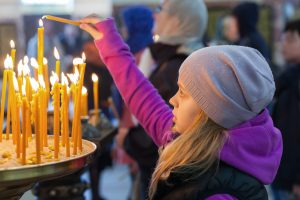 So why not the rest of the year? How come we can only handle kids voices leading worship or acting out scripture once a year? Were the kids engaged in worship of God? Yes! Were the adults? Yes!
So why not the rest of the year? How come we can only handle kids voices leading worship or acting out scripture once a year? Were the kids engaged in worship of God? Yes! Were the adults? Yes!